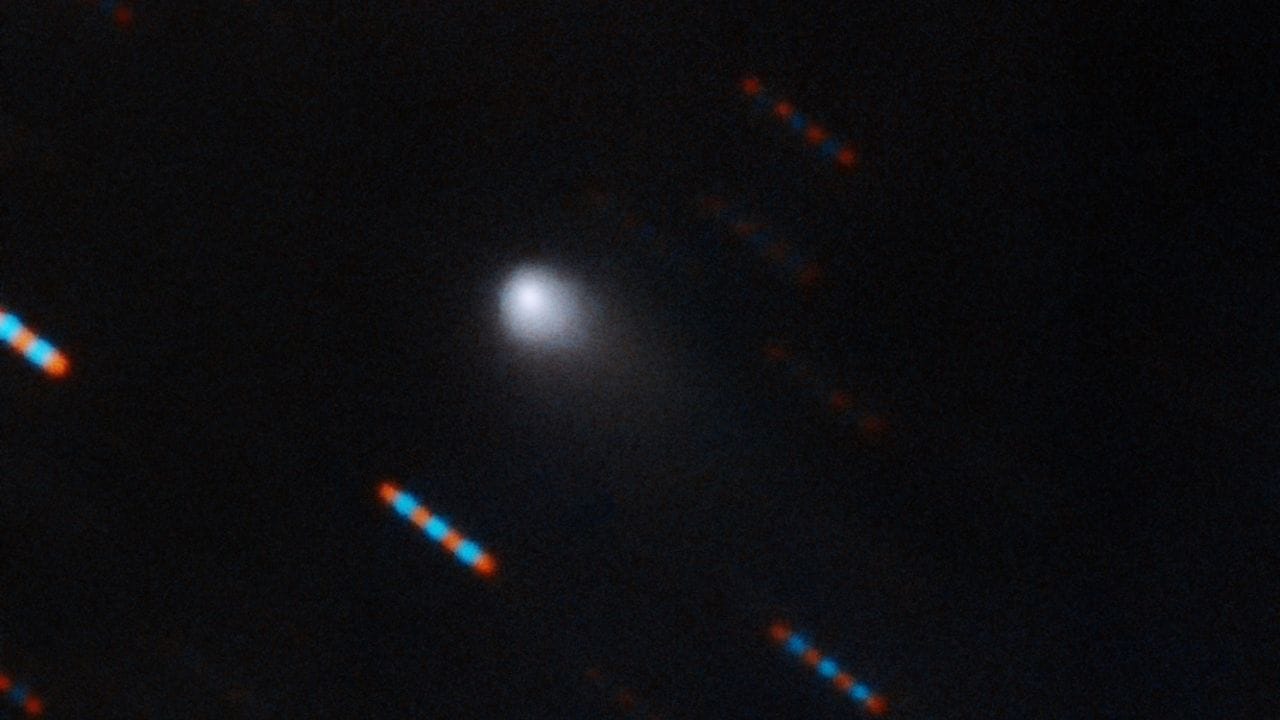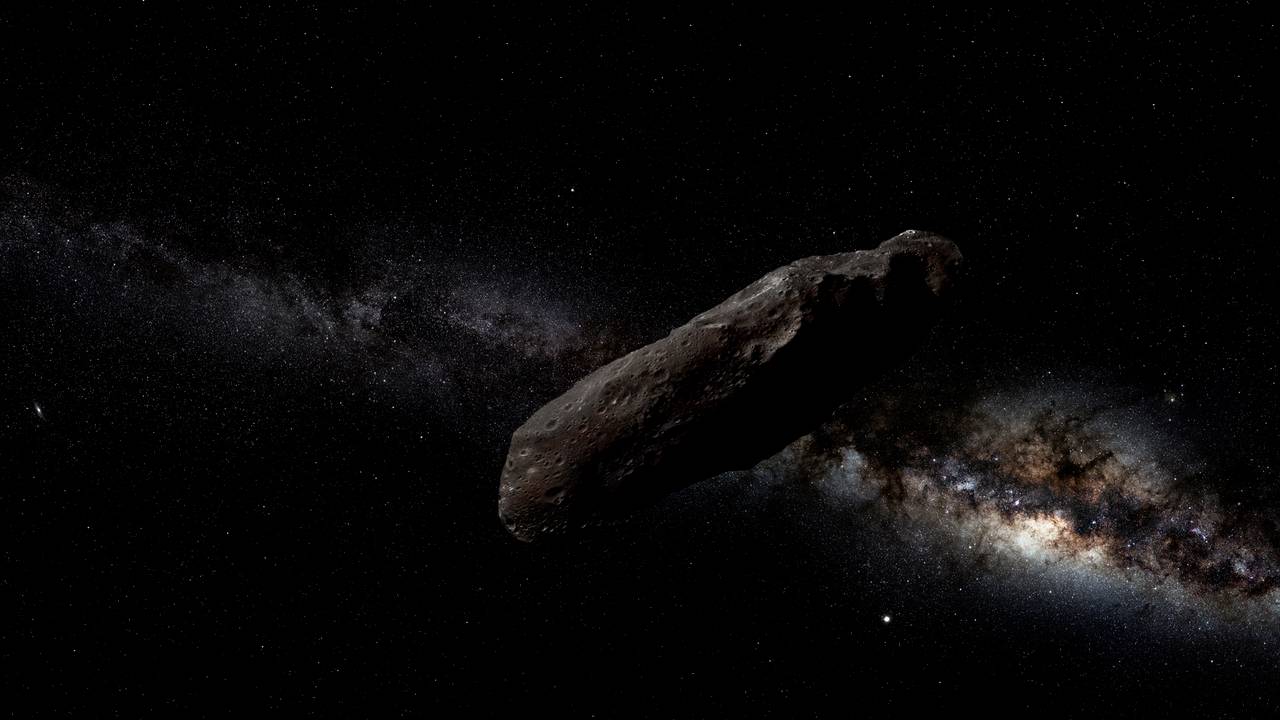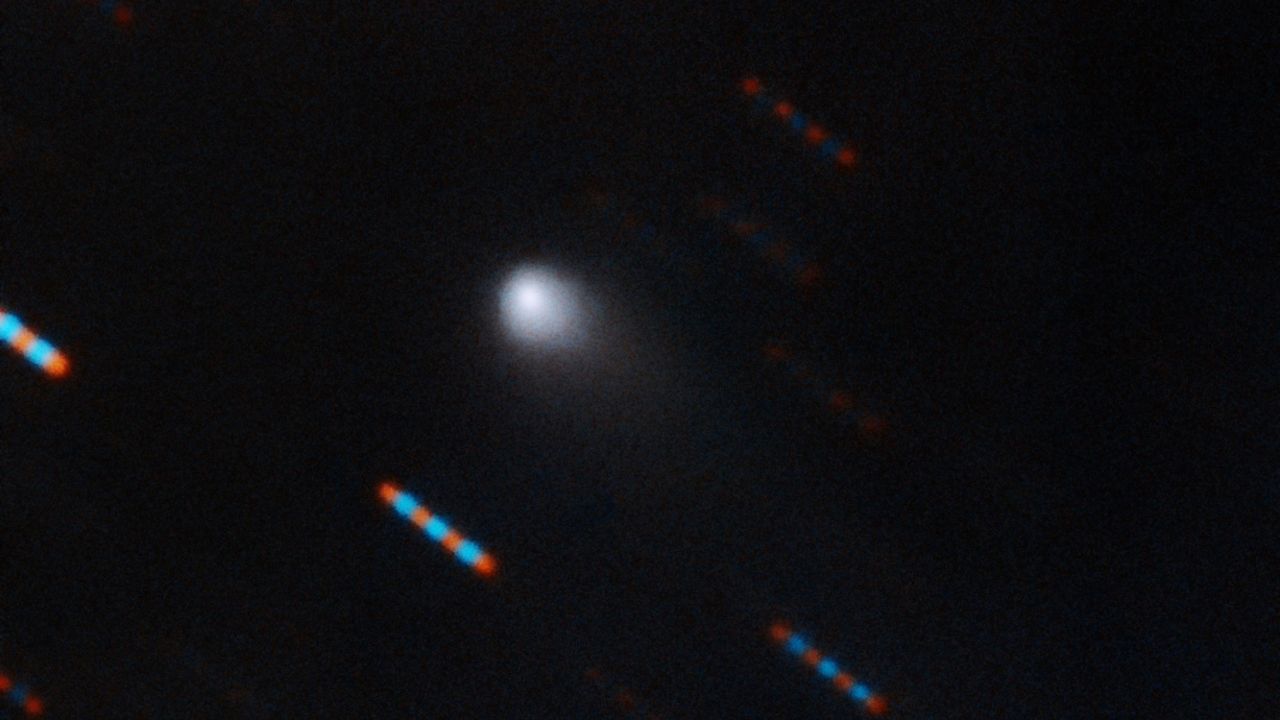An unknown object was spotted entering the solar system in August, likely from an alien world. It was
spotted by an amateur astronomer
in Ukraine on 30 August. The Minor Planet Centre, part of the Smithsonian Astrophysical Observatory
released a statement
claiming the object, called C/2019 Q4, has an orbit in the shape of a hyperbola, and was moving at high speeds unaffected by the sun’s gravity, suggesting it hails from outside our solar system. Now, astronomers have taken the first photograph of the space rock. The first time an
interstellar object entered our solar system
, astronomers and scientists caught it too late. The asteroid,
Oumuamua, was leaving
and this left them with very little time to study it. C/2019 Q4 could offer an opportunity for astronomers to compare notes with
‘Oumuamua, the first interstellar object
spotted leaving our solar system in 2017. [caption id=“attachment_7352711” align=“alignnone” width=“1280”] The interstellar comet C/2019 Q4 in action. Image: Gemini Observatory/NSF/AURA[/caption] “This image was possible because of Gemini’s ability to rapidly adjust observations and observe objects like this, which have very short windows of visibility,” Andrew Stephens, coordinator of the observations by Gemini,
said in a statement
. The image captured by the Gemini Observatory shows details about C/2019 Q4 — a fuzzy coma and tail, both of which are features of comets not seen in
‘Oumuamua
. The pronounced tail in the image is indicative of outgassing, which is a characteristical comet thing to do. This is also the first time an interstellar visitor has shown an evident tail due to outgassing. ‘Oumuamua, on the other hand, was a highly elongated asteroid-like rock with no evident outgassing. [caption id=“attachment_6915661” align=“alignnone” width=“1280”]
The interstellar comet C/2019 Q4 in action. Image: Gemini Observatory/NSF/AURA[/caption] “This image was possible because of Gemini’s ability to rapidly adjust observations and observe objects like this, which have very short windows of visibility,” Andrew Stephens, coordinator of the observations by Gemini,
said in a statement
. The image captured by the Gemini Observatory shows details about C/2019 Q4 — a fuzzy coma and tail, both of which are features of comets not seen in
‘Oumuamua
. The pronounced tail in the image is indicative of outgassing, which is a characteristical comet thing to do. This is also the first time an interstellar visitor has shown an evident tail due to outgassing. ‘Oumuamua, on the other hand, was a highly elongated asteroid-like rock with no evident outgassing. [caption id=“attachment_6915661” align=“alignnone” width=“1280”] Artist impression of the space object Oumuamua. Image credit: Wikimedia Commons[/caption] Currently, C/2019 Q4 is close to the relative position of the Sun in our sky, which is hampering observations with a glow during twilight. But better opportunities to observe it will come around over the next few months,
according to the Gemini website
, since the comet’s hyperbolic path will bring it to more favorable conditions for observations to be made. [caption id="" align=“alignnone” width=“1280”]
Artist impression of the space object Oumuamua. Image credit: Wikimedia Commons[/caption] Currently, C/2019 Q4 is close to the relative position of the Sun in our sky, which is hampering observations with a glow during twilight. But better opportunities to observe it will come around over the next few months,
according to the Gemini website
, since the comet’s hyperbolic path will bring it to more favorable conditions for observations to be made. [caption id="" align=“alignnone” width=“1280”] The trajectory of the interstellar comet.[/caption] The first observation made of the comet in August was
pre-published in arXiv
. Also read:
Three years on scientists confirm Oumuamua not alien spaceship, can’t identify it
The trajectory of the interstellar comet.[/caption] The first observation made of the comet in August was
pre-published in arXiv
. Also read:
Three years on scientists confirm Oumuamua not alien spaceship, can’t identify it
Captured in photos: Second interstellar object ever observed in our solar system
tech2 News Staff
• September 17, 2019, 11:03:54 IST
The image shows details about C/2019 Q4 — a fuzzy coma and tail, both of which are features not seen in ‘Oumuamua.
Advertisement
)
End of Article